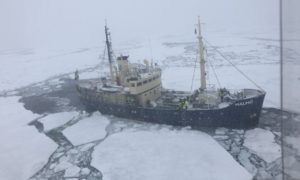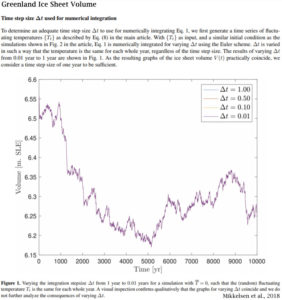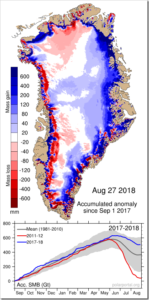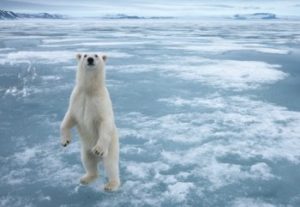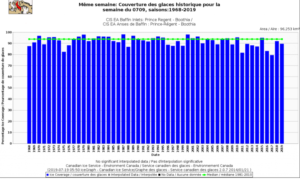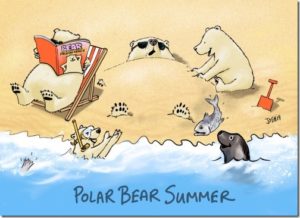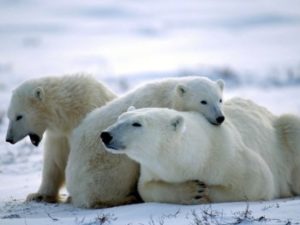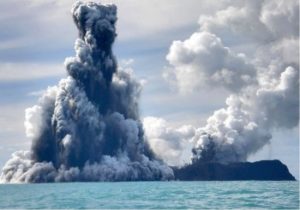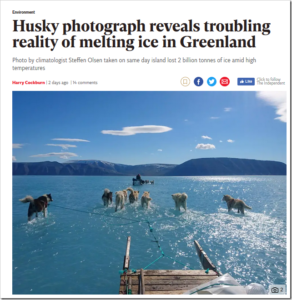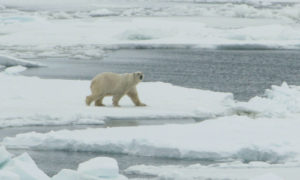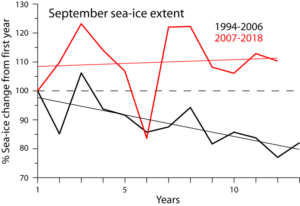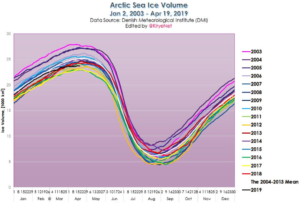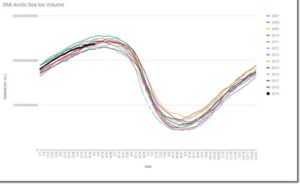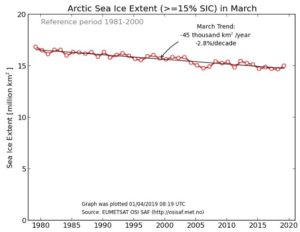by Ron Clutz, October 2, 2019 in ScienceMatters
…
MASIE daily results for September show 2019 early melting followed by an early stabilizing and refreezing.
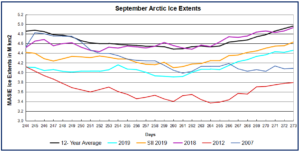
Note that 2019 started the month about 800k km2 below the 12 year average (2007 through 2018 inclusive). There was little additional loss of ice, a rise then a dip below 4 M km2, and a sharp rise ending the month. Interestingly, 2019 matched the lowest year 2012 at the start, but ended the month well ahead of both 2012 and 2007.
The table for day 273 shows distribution of ice across the regions making up the Arctic ocean.
…

